The Purple Amaranth, or Tree of the Deer’s Eye, is a beautiful plant native to Vietnam. In this article, we will explore everything there is to know about this fascinating plant.
1 What is the Purple Amaranth?
Origin and Significance of the Purple Amaranth
The Purple Amaranth, also known as the Velvet Leaf, has the scientific name Alternanthera dentata. It is native to the West Indies or Brazil. In Vietnam, the tree is distributed throughout the provinces and usually blooms between April and May, with beautiful purple flowers that captivate the beholder.
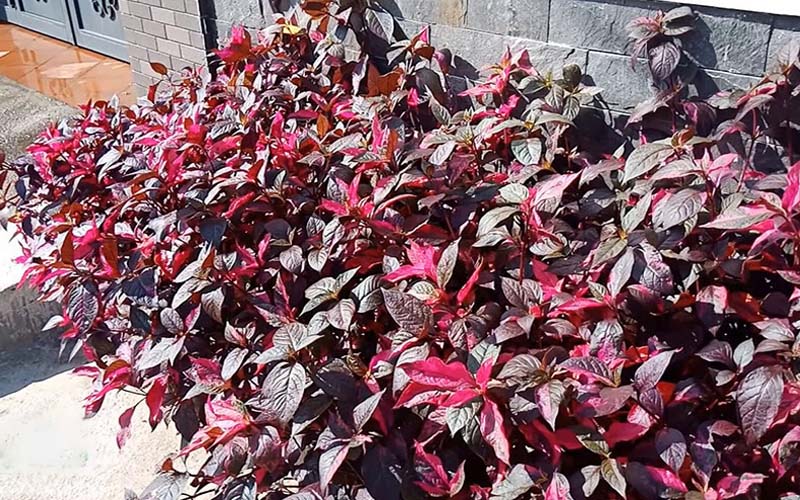 Introduction to the Purple Amaranth
Introduction to the Purple Amaranth
Feng Shui Significance of the Purple Amaranth
Beyond its aesthetic appeal, the Purple Amaranth holds significance in Feng Shui. It is believed to bring abundant energy, represent purity, joy, and a strong life force. In life, the tree symbolizes the aspiration to rise and embrace positive energy. The elegant and simple flowers of the Purple Amaranth bring peace to its cultivator.
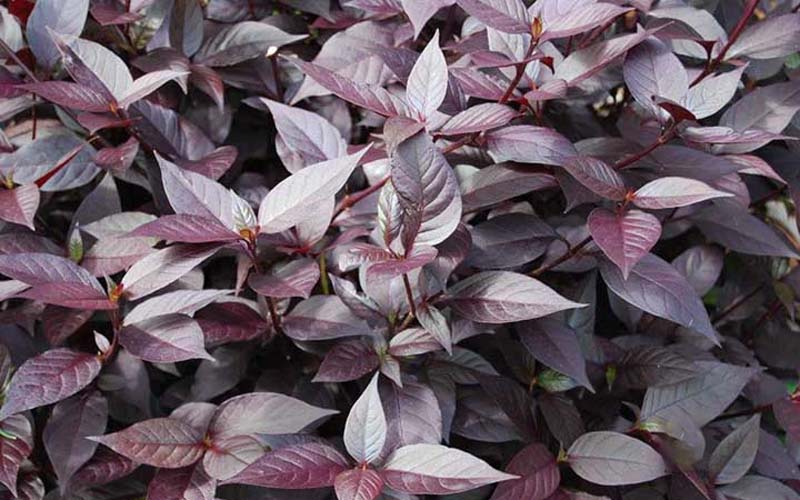 Significance of the Purple Amaranth
Significance of the Purple Amaranth
Given its purple hue, the Purple Amaranth is particularly suitable for individuals with Earth or Wood elements in their birth charts. The following birth years are considered auspicious for cultivating this tree: Nhâm Ngọ (1942), Kỷ Hợi (1959), Mậu Thìn (1988), Quý Mùi (1943), Nhâm Tý (1972), Kỷ Tỵ (1989), Canh Dần (1950), Quý Sửu (1973), and Tân Mão (1951). Planting the Purple Amaranth during these years is believed to attract wealth and prosperity.
 Purple Amaranth and Feng Shui Compatibility
Purple Amaranth and Feng Shui Compatibility
For those who are compatible with the Purple Amaranth based on their birth chart and element, planting this tree is thought to bring good fortune. Conversely, those who are incompatible should refrain from planting it to avoid conflicting energies. The Purple Amaranth can be placed in shaded areas such as balconies, desks, or outdoor gardens to attract positive energy for the homeowner.
 Is the Purple Amaranth Toxic? Optimal Placement According to Feng Shui
Is the Purple Amaranth Toxic? Optimal Placement According to Feng Shui
Characteristics and Classification of the Purple Amaranth
The Purple Amaranth has distinct, symmetrical leaves that grow in pairs. Each leaf blade measures between 3 and 6 cm in length and 2 to 3 cm in width, with an oval shape. The leaf margins are finely hairy, and the veins are prominent to the touch. The leaves boast a deep purple hue.
The Purple Amaranth’s stem is soft and purple, similar to its leaves. It produces multiple branches with shoots, and each axil bears a pair of leaves.
The flowers of the Purple Amaranth are unique and resemble tiny, white snowflakes. They typically bloom between April and May, growing in clusters with one pistillate and two staminate flowers.
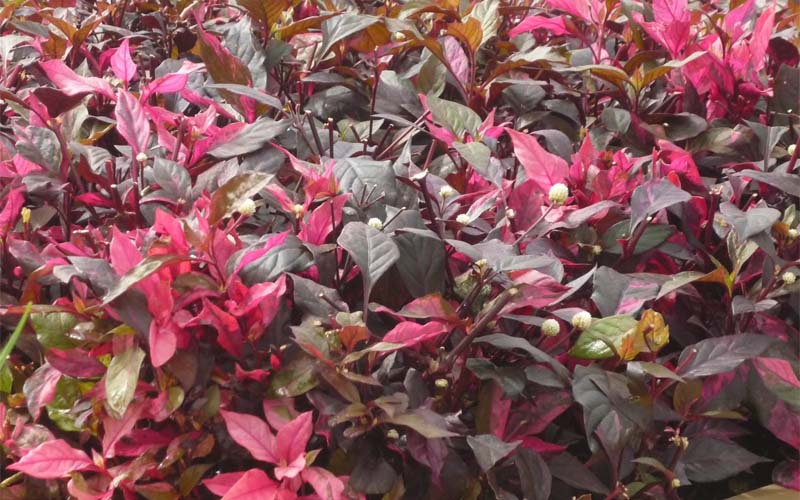 Characteristics of the Purple Amaranth
Characteristics of the Purple Amaranth
2 Benefits of the Purple Amaranth
With its vibrant purple foliage, the Purple Amaranth is often cultivated for decorative purposes in public parks, school campuses, and hospital grounds. It is also paired with other plants like string-of-pearls, bitter leaf, and cotong mai to enhance their colors and create a stunning visual display. Additionally, the Purple Amaranth is a favorite among gardening enthusiasts, often gracing the gardens of villas and residences.
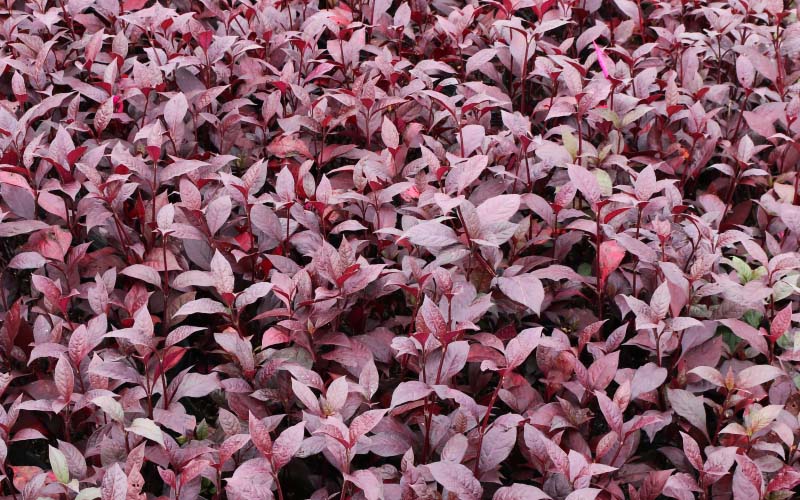 Uses of the Purple Amaranth
Uses of the Purple Amaranth
3 How to Grow and Care for the Purple Amaranth
Planting the Purple Amaranth at Home
- Temperature: The Purple Amaranth thrives in warm temperatures, with an ideal range of 25-27°C. For seed germination, a slightly cooler range of 20-25°C is preferable.
- Soil: Opt for well-aerated soil and enrich it with compost and organic fertilizer. Mix soil, organic matter, and compost in a 5:3:2 ratio. Fill about ⅓ of your pot with this mixture. If planting directly in the ground, clear the area of weeds and apply fungicides before planting. Sow seeds in a tray, level the surface, and cover with a thin layer of soil. Keep the seeds moist, and they will germinate within a few days. Once the seedlings reach a height of 6-8 cm and have 3-4 leaves, they can be transplanted into pots.
- Light: While the Purple Amaranth tolerates direct sunlight, it is best to provide shade during the seedling stage to promote healthy growth. Prolonged shade, however, will hinder flowering and diminish the intensity of the purple color.
- Watering: Water twice a day, in the early morning and late afternoon, when the plant is young. Water gently to avoid splashing soil onto the leaves. As the plant matures, reduce watering to once a day, focusing on the root zone in the morning.
- Fertilizer: About 10-15 days after planting, apply a nitrogen-potassium fertilizer in a 1:1 ratio. When the plant starts to branch and flower vigorously, adjust the ratio to 1:2. Once 90% of the flowers have bloomed, switch back to nitrogen-only fertilizer.
Caring for the Purple Amaranth
Caring for the Purple Amaranth is relatively straightforward. However, it is essential to provide adequate fertilizer to encourage lush growth and vibrant flowers.
Notes on Growing and Caring for the Purple Amaranth
As the plant grows, its branches may become weighed down by the flowers, causing them to bend. Pruning is necessary to maintain the plant’s shape and encourage new growth. Keep an eye out for powdery mildew, a fungal disease that thrives in high humidity. This disease affects the leaves, stems, and flower buds. If detected, treat the plant with Anvil 5SC.
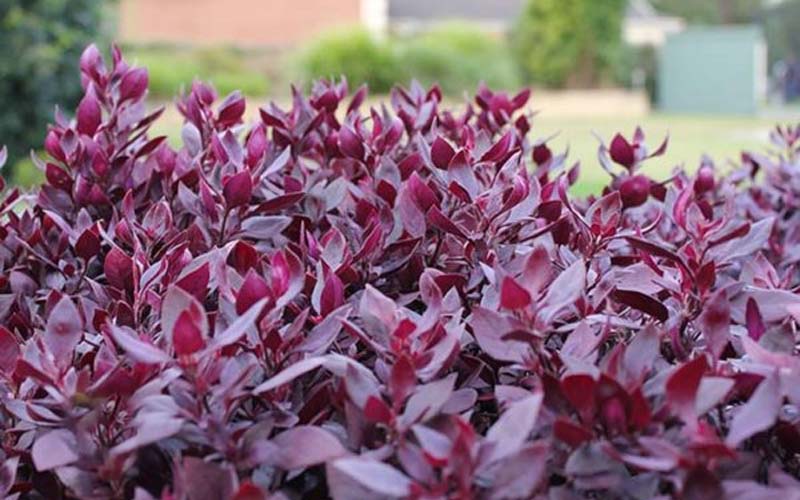 Growing and Caring for the Purple Amaranth
Growing and Caring for the Purple Amaranth
Purple Amaranth seedlings are affordable, typically costing between 10,000 and 30,000 VND. They can be purchased from local nurseries or online vendors, but be sure to buy from reputable sources to ensure the health of your seedlings.
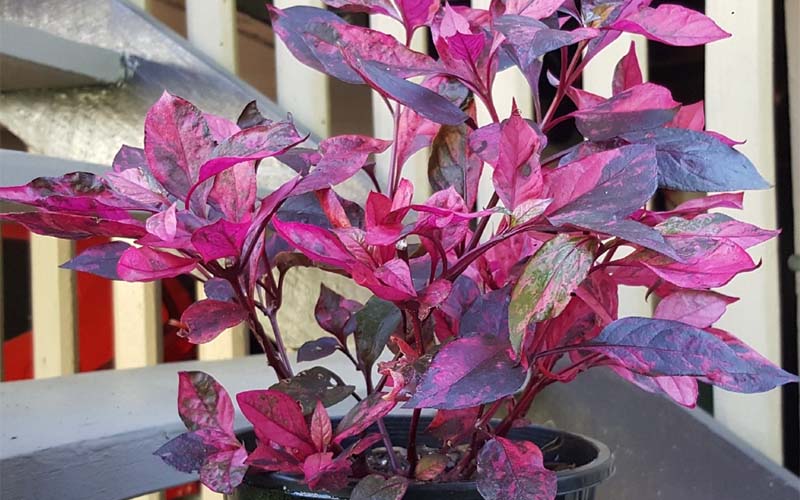 Where to Buy and Price of Purple Amaranth
Where to Buy and Price of Purple Amaranth
4 Five Beautiful Images of the Purple Amaranth
 Image 1
Image 1
 Image 2
Image 2
 Image 3
Image 3
 Image 4
Image 4
 Image 5
Image 5
In this article, we have explored the Purple Amaranth, its characteristics, benefits, and cultivation techniques. We hope you found this information interesting and useful.



































